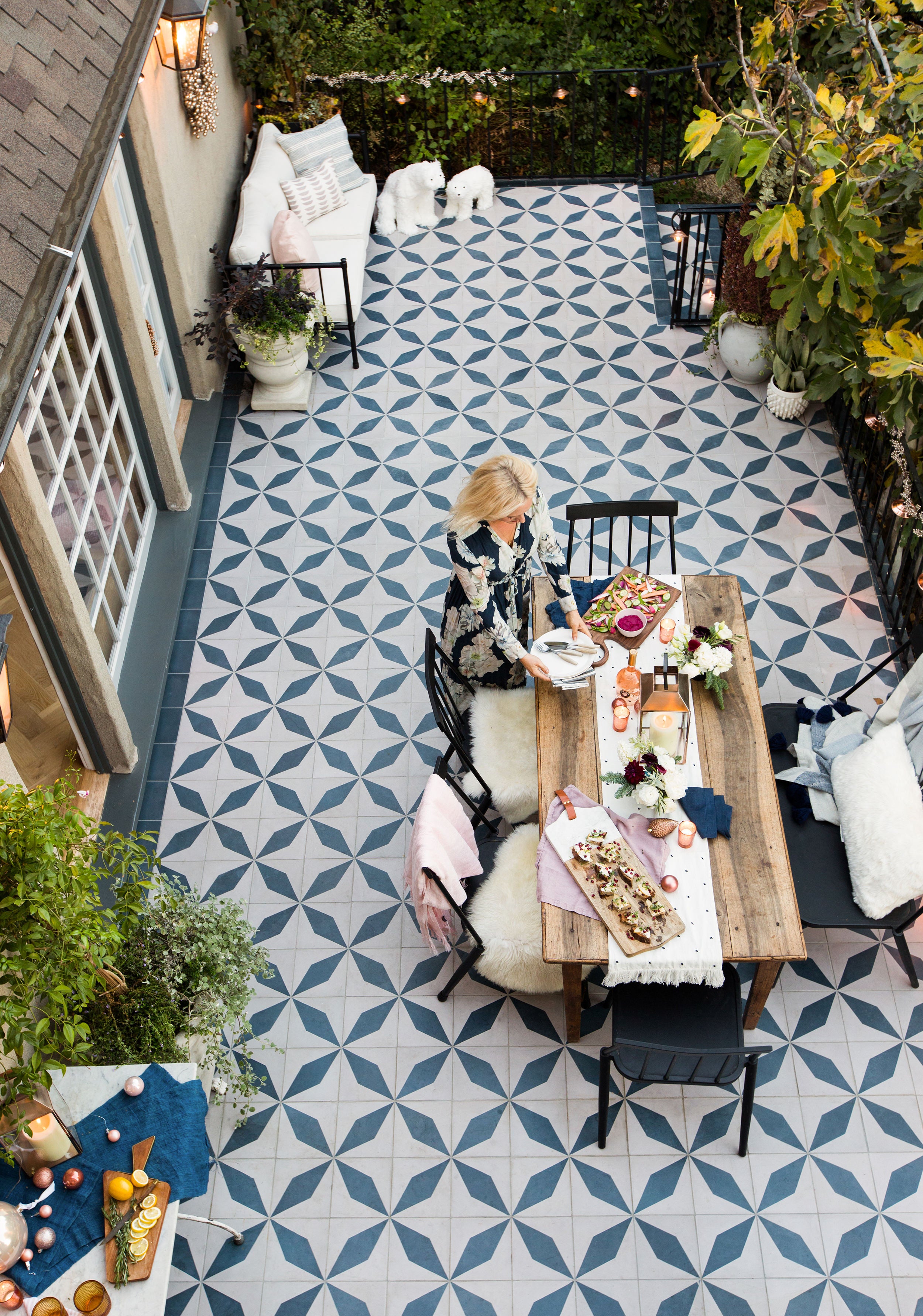There is a time and place for textured walls, but that time was 40 years ago and that place is a design graveyard.
That’s not to say textured walls don’t have any merit - they can add an interesting aspect to an otherwise boring room that suffers from excess wall space. Or, if you’re in a bind, they can be an easy way to cover up drywall seams.

The thing about textured walls, though, is that they really don’t age well. Think of ‘60s- and ‘70s- era homes and their wood panels, orange peel walls, and (gasp) popcorn ceilings. If you find yourself living in a home with some of these unfortunate traits, there’ll come a time when you want to cover those bad boys up...with Quadrostyle vinyl wallpaper, for example.

Image source: Young House Love
People often ask us how to apply Quadrostyle stickers to textured surfaces. And it’s a great question because normally, rough surfaces lead to a number of application problems. Either the wallpaper won’t be able to stick, you’ll have trouble lining up the tiles evenly, or unavoidable air bubbles will leave unsightly marks on the surface.
The Quadrostyle Solution
However, there is a solution and it only requires a couple of extra steps. By first applying a barrier surface, you can cover any textured surface with vinyl stickers. It’ll take a bit of work, but it’s a lot easier and cheaper than it sounds, believe me. It all boils down to three simple steps, detailed below.
Step One: Stock up on melamine panels
For mildly textured walls, it may be possible to smooth over irregularities with a skim coat. A skim coat is a joint compound, or “mud,” that can be used to fill in cracks and even out odd surfaces.
But it’s not as easy as throwing on a new layer of paint. It’s messy and far more trouble than it’s worth (seriously, read about the grueling and time-consuming process here). Plus, it won’t work on strangely shaped tiles, mosaic, or other materials that have been layered onto the drywall, like wood panels.


Uneven terra cotta tile and mosaic-style backsplashes like these are examples of tricky textures to cover.
Image Source: architecture art designs
Instead, we recommend applying a buffer surface directly over the target area. Our pick? 1/4" white melamine panels.
Melamine is a simple plastic laminate, often attached to particle board to give it density and thickness. It’s water-resistant and commonly used for building and design projects because it’s cheap and durable. You can find it at any local hardware store.
Measure out the surface you would like to cover with tile stickers or wallpaper and bring those measurements to the hardware store. For just a few extra bucks, they’ll save you a hassle and cut it to size for you.
If the surface you’d like to cover has any fittings, like power outlets, use those spots to join panels. You’ll be able to cover these seams nicely with your Quadrostyle panels.

Save yourself a trip to the store and buy these melamine panels online.
To make things even easier, melamine is usually sold in 2 x 4-foot boards – the same dimensions as our wallpaper panels! If you don’t have access to melamine, aluminum or acrylic (Perspex/Plexiglass) panels will do the trick as well.
Step Two: Put em’ up!
Now that your melamine is cut, it’s time to mount them on the wall. There are a few ways you could go about this: screw them into the wall, use Velcro tape, or hang them from crown molding using picture hangers.
Velcro tape
The easiest, most hassle-free option is to use Velcro tape. This is a great option for renters who hope to leave a little mess as possible to clean up before moving out. Unless you’re a renter, though, you should consider choosing another method to affix your melamine to the wall. Melamine boards aren't light so be sure to use many rows of the tape so the board stays up.
Screws
If you choose to attach your melamine panels to the wall using screws, make sure you’ve got the right ones. Melamine is made to be durable and resistant and, as such, it doesn’t always take kindly to screws. Depending on the thickness of the panel you’re using, you may also have to consider the particleboard that makes up the bulk of the melamine board. Lucky for you, the safest screws to use on particleboard are drywall screws, making them perfect for drilling to the wall.
Picture hangers
Those with crown molding have another option that’s renter-friendly and great for older homes whose walls are sensitive to screws. Use picture hangers to suspend boards over the textured wall – no drilling necessary! Simply use a wire or cable to join your panels to a picture hanger, and hook it onto the crown molding. Depending on the size of the surface you want to cover, you may need to string several panels together.

Picture hanger with wire cord (Source: Pinterest)
The caveat to this method, of course, is that the panels will not lay flush to the wall and may sway.

Framed pictures hanging from crown molding. Learn how to do it yourself with this guide from One Kings Lane!
Step Three: Install your wallpaper
Your melamine panels are cut and up on the wall – it’s time for the fun part!
Installing your Quadrostyle vinyl stick-on wallpaper is a breeze. To get started, mark the width of the wallpaper panel directly onto the melamine using a pencil. This plumb line will be your guide to making sure that your wallpaper goes on evenly.

Vinyl Splashback in Black Corona
Next, peel the adhesive wallpaper from its backing and position it at the top edge of the surface you are covering, making sure it lines up with the plumb line. Slowly remove the backing, while smoothing the vinyl wallpaper against the wall. Go over the surface with a straight edge, such as a credit card or ruler, to push out any air bubbles that may have gotten trapped.
Carefully align the next panel to make sure that the pattern matches up with the panel beside it. Once you’ve installed all your Quadrostyle panels, trim off the excess using a utility knife and you’re all set!
No more rough surfaces, just smooth vibrant wallpaper and a whole new mood for your room! Leave the edges raw or add a molding for the finishing touch.

Centaur vinyl wallpaper
If you need extra help with installation, consult the Quadrostyle wallpaper installation guide and its helpful graphics.
This is a technique you can use for any area, whether it’s an entire wall or the small space of a splashback. It may not be a quick process, but it’s simple and gets the job done. Plus, victory tastes sweeter when you’ve earned it, right? No one, even renters, should have to settle for anything less than the home of their dreams!
Keep browsing the Home Improvement blog for more tips and tricks for using tile stickers to update your digs.



Leave a comment
All comments are moderated before being published.
This site is protected by hCaptcha and the hCaptcha Privacy Policy and Terms of Service apply.